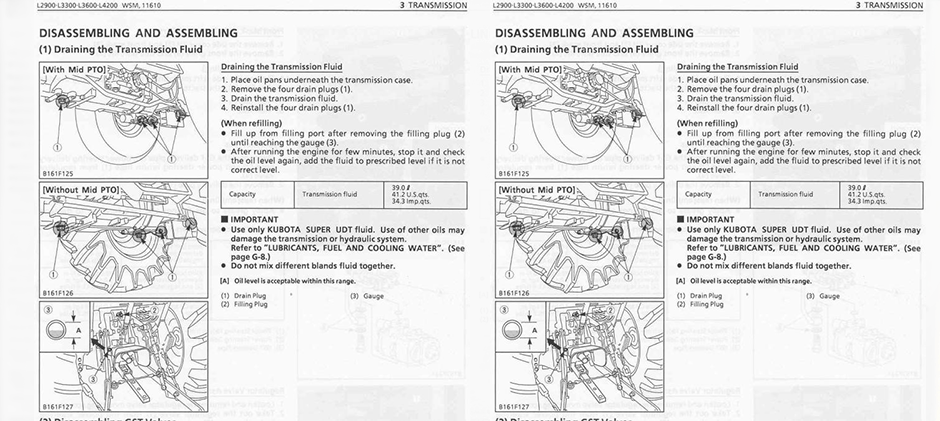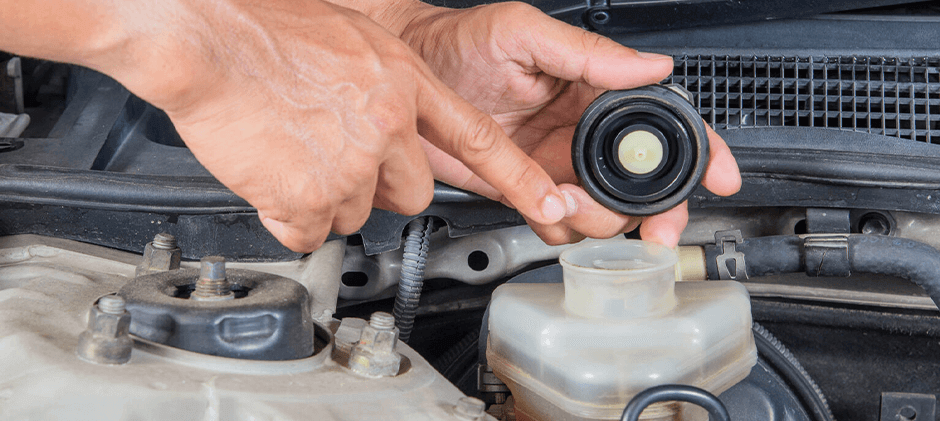Have you searched every part of your tractor but still can’t find—or aren’t sure—where to add hydraulic fluid? This article will solve that problem for you. In most cases, the hydraulic fluid fill point is located near the engine. However, some Kubota equipment has a more unique placement. Plus, knowing whether you should add or replace the hydraulic fluid can also be tricky. In this guide, we’ll give you clear, step-by-step answers to help you handle hydraulic fuild maintenance with confidence.
Recognize the Kubota Tractor Hydraulic System
Before you open a single cap, it’s helpful to understand what you’re working with. A tractor’s hydraulic system uses pressurized fluid to transfer immense force. On your Kubota, this system is a closed loop consisting of several key components:
- Hydraulic Pump: This is the heart of the system, driven by the engine to create fluid pressure.
- Hydraulic Cylinders: These are the muscles that convert fluid pressure into mechanical movement to lift the loader arms or the three-point hitch.
- Hydraulic Reservoir: This is the storage tank for the fluid, which on most Kubota tractors is integrated into the transmission and rear axle housing.
- Control Valves: These are the brains, directing the flow of fluid to the correct cylinder when you move a lever.
- Filters: These are the kidneys, constantly cleaning the fluid to remove tiny metal particles and contaminants. The Kubota hydraulic filter is a critical, non-negotiable part of this system’s health.
Proper fluid levels and cleanliness are essential for all these parts to function together. But it all begins with using the correct Kubota tractor hydraulic fluid for your machine.
Source from: www.tractorbynet.com
Where to Fill Hydraulic Fluid for a Tractor?
Finding the Kubota tractor hydraulic fluid fill location is the first practical step. While the exact spot can vary slightly between different series (like the BX, L, or M series), the location is generally consistent on most models. The most common location is on the top of the rear axle housing, near the three-point hitch.
- Look for a large, screw-on cap. It is often colored bright orange or yellow for easy identification and may be labeled “HYD OIL” or have a small icon of a gear and oil drop. On many Kubota models, the dipstick is integrated directly into the fill cap. You simply unscrew the cap, wipe the dipstick clean, re-insert it without screwing it back in, and pull it out to get a reading.
- If you cannot find it on the rear of the tractor, the second most likely location is on the side of the transmission case. Always remember the golden rule of tractor maintenance: when in doubt, consult your operator’s manual. It will have a diagram showing the exact location for your specific model. Before you add any fluid, it’s crucial to know how to check the current level properly to avoid overfilling.
How to Fill or Change Hydraulic Fluid for a Kubota Tractor?
Performing a full hydraulic fluid and filter change is one of the most valuable preventative maintenance jobs you can do. While simply topping off the fluid is fine for minor adjustments, a full change every 300-400 hours (or as specified in your manual) is essential for long-term health.
Tools and Materials Needed:
- The Correct Hydraulic Fluid: This is non-negotiable. Using the wrong fluid can damage seals and clutches. It’s vital to know what type of hydraulic fluid your Kubota needs, which is typically a UDT or SUDT2 fluid.
- New Kubota Hydraulic Filter: Never change the fluid without changing the filter.
- Large Drain Pan: Kubota hydraulic systems can hold several gallons of fluid.
- Wrench/Socket Set: To remove the drain plugs.
- Filter Wrench: To remove the old hydraulic filter.
- Clean Funnel: To prevent contamination when refilling.
- Clean Rags: For wiping the dipstick and cleaning up spills.
- Safety Glasses and Gloves.
Step-by-Step Guide to Changing the Fluid
1. Prepare the Tractor:
Run the tractor for 5–10 minutes to warm the hydraulic fluid so it flows better and carries more contaminants out. Park on a level surface, lower all implements, turn off the engine, and set the parking brake.
2. Locate and Position Drain Pan:
Find the hydraulic drain plugs underneath the tractor—often one main plug under the transmission case and smaller ones on each rear axle housing. Place your drain pan under the main plug.
3. Drain the Old Fluid:
Loosen and remove the drain plug(s). Once the main flow slows, open the fill cap on the rear housing to let air in and help the fluid drain fully.
4. Replace the Hydraulic Filter:
While draining, locate the Kubota canister-style filter on the transmission case. Use a filter wrench to remove it. Apply a thin film of clean oil to the gasket on the new filter, screw it on by hand until it seats, then tighten another ½–¾ turn.
5. Reinstall Drain Plugs:
When draining stops, clean the plugs and the surrounding area. Reinstall the plugs securely, following the manufacturer’s torque specs if possible.
6. Refill with New Fluid:
Using a clean funnel, fill the system with about 80% of the recommended capacity. Check your manual for the exact amount.
7. Circulate the Fluid:
Replace the fill cap, start the tractor, and run it at low idle. Operate all hydraulic controls to circulate fluid and remove air pockets.
8. Final Check and Top-Off:
Shut the tractor off, wait 5–10 minutes, then check the dipstick. Add fluid slowly until it reaches the “Full” mark—do not overfill.
The Maintenance Tips for Hydraulic Systems
Beyond fluid changes, you can extend the life of your hydraulic system with these simple habits:
- Regularly Inspect Hoses: Look for cracks, abrasions, or soft, bulging spots in the hydraulic hoses. Replace any damaged hoses immediately before they fail under pressure.
- Keep Connections Clean: Wipe away any dirt or debris from hydraulic couplers before connecting implements.
- Warm-Up Properly: In cold weather, give the tractor a few minutes to warm up at low idle before operating the hydraulics. This allows the fluid to thin out and flow properly.
- Address Leaks Promptly: A small drip is a sign of a failing seal or loose fitting. Find and fix it before it becomes a major leak that can drain your system or cause a dangerous failure.
- Use Quality Parts: When it comes time for repairs, always use high-quality Kubota tractor parts, whether it’s a new filter, a hose, or a seal.
Conclusion
Properly maintaining your Kubota’s hydraulic system is a straightforward job that pays huge dividends in performance and longevity. By understanding the system, knowing the correct Kubota tractor hydraulic fluid fill location, and following a diligent fluid and filter change schedule, you ensure your machine is always ready to work. For all your maintenance needs, from filters to hydraulic components, FridayParts offers a vast inventory of affordable, high-quality aftermarket parts to help you keep your tractor in peak condition for years to come.


